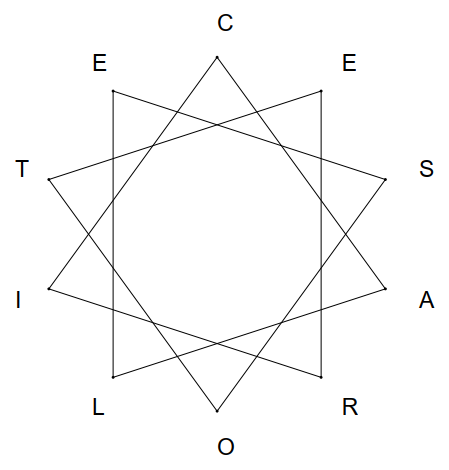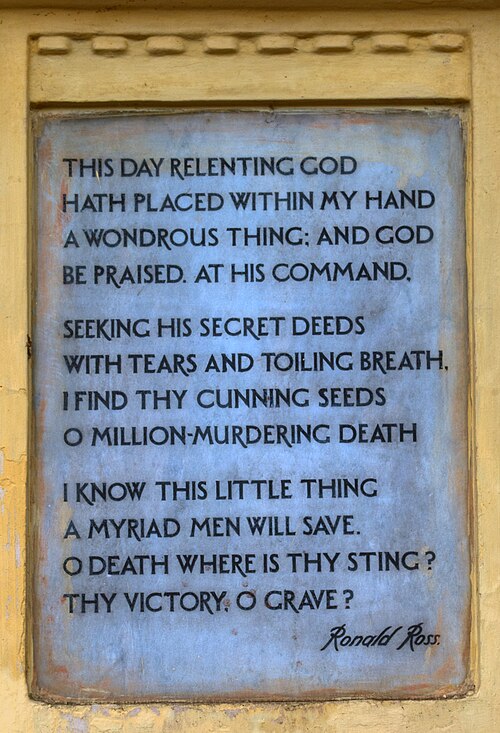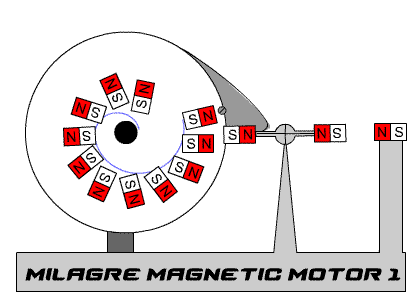I know this is early, but I just bumbled into it on the Wikimedia Commons (by user GB fan):

I know this is early, but I just bumbled into it on the Wikimedia Commons (by user GB fan):

“A Glossary for Research Reports,” by C.D. Graham Jr., from Metal Progress, May 1957:
| It has long been known that … | I haven’t bothered to look up the original reference |
| … of great theoretical and practical importance | … interesting to me |
| While it has not been possible to provide definite answers to these questions … | The experiments didn’t work out, but I figured I could at least get a publication out of it |
| The W-Pb system was chosen as especially suitable to show the predicted behaviour … | The fellow in the next lab had some already made up |
|
High-purity … Very high purity … Extremely high purity … Super-purity … Spectroscopically pure … |
Composition unknown except for the exaggerated claims of the supplier |
| A fiducial reference line … | A scratch |
| Three of the samples were chosen for detailed study … | The results on the others didn’t make sense and were ignored |
| … accidentally strained during mounting | … dropped on the floor |
| … handled with extreme care throughout the experiments | … not dropped on the floor |
| Typical results are shown … | The best results are shown |
| Although some detail has been lost in reproduction, it is clear from the original micrograph that … | It is impossible to tell from the micrograph |
| Presumably at longer times … | I didn’t take time to find out |
| The agreement with the predicted curve is excellent | … fair |
| … good | … poor |
| … satisfactory | … doubtful |
| … fair | … imaginary |
| … as good as could be expected | … non-existent |
| These results will be reported at a later date | I might possibly get around to this sometime |
| The most reliable values are those of Jones | He was a student of mine |
|
It is suggested that … It is believed that … It may be that … |
I think |
| It is generally believed that … | A couple of other guys think so too |
| It might be argued that … | I have such a good answer to this objection that I shall now raise it |
| It is clear that much additional work will be required before a complete understanding … | I don’t understand it |
| Unfortunately, a quantitative theory to account for these effects has not been formulated | Neither does anybody else |
| Correct within an order of magnitude | Wrong |
| It is to be hoped that this work will stimulate further work in the field | This paper isn’t very good, but neither are any of the others in this miserable subject |
| Thanks are due to Joe Glotz for assistance with the experiments and to John Doe for valuable discussions | Glotz did the work and Doe explained what it meant |
See Progress.

In a 1977 letter to Nature, University of Malaya geologist N.S. Haile observed the poor quality of an 1818 paper by one P.B. Shelley and presented this improvement:
Twin limb-like basalt columns (‘trunkless legs’) near Wadi Al-Fazar, and their relationship to plate tectonics
Ibn Batuta and P.B. Shelley
In a recent field trip to north Hadhramaut, the first author observed two stone leg-like columns 14.7 m high by 1.8 m in diameter (medium vast, ASTM grade scale for trunkless legs) rising from sandy desert 12.5 km southwest of Wadi Al-Fazar (Grid 474 753). The rock is a tholeiitic basalt (table 1); 45 analyses by neutron activation technique show that it is much the same as any other tholeiitic basalt (table 2). A large boulder 6 m southeast of the columns has been identified as of the ‘shattered visage’ type according to the classification of Pettijohn (1948, page 72). Granulometric analysis of the surrounding sand shows it to be a multimodal leptokurtic slightly positively skewed fine sand with a slight but persistent smell of camel dung. Four hundred and seventy two scanning electron photomicrographs were taken of sand grains and 40 are reproduced here; it is obvious from a glance that the grains have been derived from pre-cambrian anorthosite and have undergone four major glaciations, two subductions, and a prolonged dry spell. One grain shows unique lozenge-shaped impact pits and heart-like etching patterns which prove that it spent some time in upstate New York.
There is no particular reason to suppose that the columns do not mark the site of a former hotspot, mantle plume, triple junction, transform fault, or abduction zone (or perhaps all of these).
Haile added, “I pass this on in the hope that it will be of value to authors in preparing papers for publication.”
Leonard J. Gordon discovered this remarkable cryptarithm in 1990 — each letter corresponds to a digit:
NINE × FOUR + FIVE = FORTYONE
9895 × 3074 + 3865 = 30421095
(Leonard J. Gordon, “Literary Cryptarithmetic by Computer,” Word Ways 23:2 [May 1990], 67-70.)
Write the word CESAROLITE in a circle and then trace out the letters in its anagram ESOTERICAL — the result is a perfect 10-pointed star:

Only 5.7 percent of anagrams in English are “maximally shuffled,” meaning that no letter retains its original neighbors. And even those rarely produce such pleasing symmetry when they’re diagramed like this. This is the largest “perfect” star anagram found in a systematic search by Jason Parker and Dan Barker; for more, see the link below.
(Jason Parker and Dan Barker, “Star Anagram Detection and Classification,” Recreational Mathematics Magazine 12:20 [June 2025], 19-40.)
In 1849, to serve as “an introduction to the abstract worship of Humanity,” Auguste Comte proposed a new calendar with 13 months of 28 days. A festival day commemorating the dead brought the total to 365 days, but the extra day fell outside the regular cycle of days of the week, so the first of each month always fell on a Monday. Months were named after great figures in the history of Western Europe:
To keep things on track, leap years added a second festival day, commemorating holy women. The calendar “contains the names of 558 great men of all periods, classified according to their field of activity,” and villains of history, notably Napoleon, were held up to “perpetual execration.”
The scheme has a pleasing mathematical tidiness: Each year contains exactly 52 weeks falling into 13 months, and each month has exactly 28 days comprising four weeks. The whole thing remains consistent from year to year — if you were born on a Wednesday, your birthday would always fall on a Wednesday. And since all months contain the same number of business days and weekends, statistical comparisons by month are more accurate.
It never caught on, in part because of those month names. Science writer Duncan Steel notes that “it would seem strange to give the date as the third day of Homer, and with a month named for the bard a reference to ‘Shakespeare’s Twelfth Night’ would be ambiguous.”
Working in the Indian Medical Service in 1897, British physician Ronald Ross discovered a malarial parasite in the gastrointestinal tract of a mosquito, proving that these insects transmitted the disease. He sent a poem to his wife that’s now inscribed on a monument in Kolkata:

He won the Nobel Prize for Physiology or Medicine in 1902, the first British Nobel laureate.

This is clever — a perpetual motion machine driven by magnets.
Unfortunately, such a machine simply doesn’t work — without an external energy supply, it quickly stops moving.

Why is the night sky dark? If the universe is static and infinitely old, with an infinite number of stars distributed homogeneously in an infinitely large space, then, whatever direction we look in the night sky, our line of sight should end at a star. The sky should be filled with light.
This puzzle is most often associated with the German astronomer Heinrich Wilhelm Olbers, but Edgar Allan Poe made a strikingly similar observation in his 1848 prose poem Eureka:
Were the succession of stars endless, then the background of the sky would present us a uniform luminosity, like that displayed by the Galaxy — since there could be absolutely no point, in all that background, at which would not exist a star.
Poe suggested that the universe isn’t infinitely old: “The only mode, therefore, in which, under such a state of affairs, we could comprehend the voids which our telescopes find in innumerable directions, would be by supposing the distance of the invisible background so immense that no ray from it has yet been able to reach us at all.” We now know that the sky is dark because the universe is expanding, which increases the wavelength of visible light until it appears dark to our eyes.

The distinctive smells of spearmint and of caraway seeds are produced by mirror images of the same molecule, carvone.
The fact that we can distinguish these smells shows that our olfactory receptors can sometimes discern the “handedness” of such molecules. But this isn’t the case with every set of “enantiomers.”